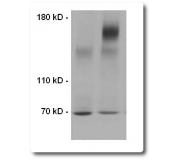Transmembrane Protein Extraction Reagent (Part No. tmPER-50; Plasma Protein Isolation)
 Click to enlarge |
|
|
Transmembrane Protein Extraction Reagent
(Membrane Protein Isolation. Mammalian cells & plants cells)
Part: tmper-50: 30 ml volume.
Suitable for one hundred 10 cm cell culture dishes of confluent cells. Scalable to other quantities and sizes of culture plates.
Transmembrane Protein Extraction Reagent (tmPER-50TM ); Overview
The FIVEphoton Biochemicals Transmembrane Protein Extraction Reagent (tmPER-50TM) is a cell lysis-protein extraction buffer with proprietary ingredients assisting in the isolation and solubility of high molecular weight multiple-membrane spanning proteins that are otherwise poorly resolvable in standard cell lysis buffers due to aggregation tendency, lipid raft association or other insolubility issues. The Transmembrane Protein Extraction Reagent is designed to extract proteins with 4 or more transmembrane domains, yet will also effectively resolve less complex transmembrane proteins. Examples for the applicability of the FIVEphoton Biochemicals Transmembrane Protein Extraction Reagent include extraction and resolution of ABC transporters, ion channels, ion exchangers and GPCRs in the downstream application of Western blotting. The Transmembrane Protein Extraction Reagent is applicable when RIPA buffer fails to extract and resolve high molecular weight proteins with a tendency to aggregate.
Transmembrane Protein Extraction Reagent (tmPER-50TM); General Protocol
The researcher first employs techniques to limit endocytosis and lysosomal targeting that may result in proteolytic cleavage of the cytoplasmic domains of multi-membrane spanning protein. In the second step, the Transmembrane Protein Extraction Reagent is added to dislodge cells from the cell culture dish and then to dissolve the cell membrane. Following membrane dissolution, brief centrifugation is used to remove cellular debris from a supernatant fraction that contains the extracted transmembrane proteins. The supernatant is added to Laemmli Sample Buffer, which is heated, but not boiled, prior to the resolution in SDS-PAGE gels. For Western blots, transfer takes place in a buffer that has added SDS and reduced amounts of methanol. The transfer is allowed to proceed approximately 25% longer than typically used in Western blotting protocols.
An easy to follow protocol for cell lysis and preparation of samples for Western Blotting is included with the Transmembrane Protein Extraction Reagent, or can be downloaded in pdf format by clicking the manual tabs.
Icon Image: Application of the Transmembrane Protein Extraction Reagent for Western blot analysis of the complex multi-pass transmembrane protein CFTR. Western blot of deltaF508 and wild-type CFTR. First lane: Western blot of a 150 kD variant of a mutant ABC transporter showing the isoform with only core glycosylation. Second lane: Western blot of the wild-type variant of the same ABC transporter capturing both core and complex glycosylation. The mature-processed wild-type isoform with complex glycosylation shown on the right has a molecular mass of 170 kD and contains 12 transmembrane domains.
Volume Options for Transmembrane Protein Extraction Reagent
*Use Available Options menu to order volume options.
Product Citations
Animal Cells
Tissues
Li, M. H., Suchland, K. L., & Ingram, S. L. (2016). Compensatory activation of cannabinoid CB2 receptor inhibition of GABA release in the rostral ventromedial medulla (RVM) in inflammatory pain. Journal of Neuroscience, 1310-16. Link to article. Plant Cells
Protocol
Representative References of High Molecular Weight Transmembrane Proteins
tmPER-50TM is provided in 30 ml volume. (tmPER-100TM; 50 ml. tmPER-200TM; 100 ml)
Supplemental Products
Shipping: Ships at ambient temperature. International delivery available.
Storage: 4oC
kw. PLASMA MEMBRANE PROTEIN, TRANSMEMBRANE, PLANT PROTEIN EXTRACTION REAGENT, MAMMALIAN CELL PROTEIN EXTRACTION, MEMBRANE LYSIS, WESTERN BLOT PROTEIN EXTRACTION
|
 Products
Products Manuals
Manuals





 - FIVEphoton Biochemicals-80x80.jpg)




